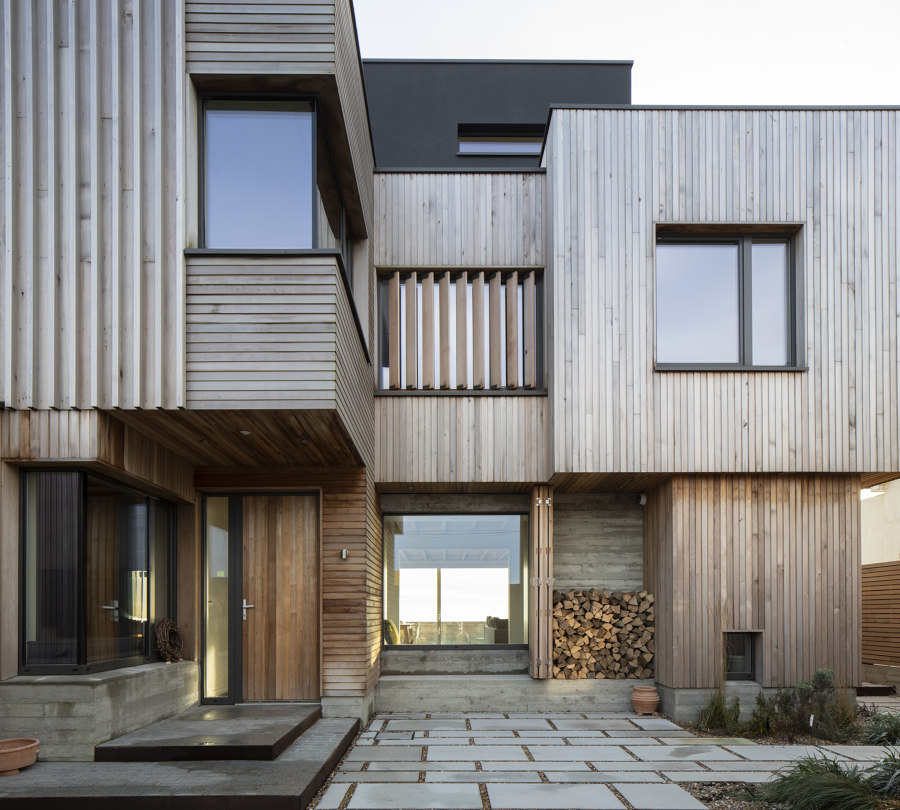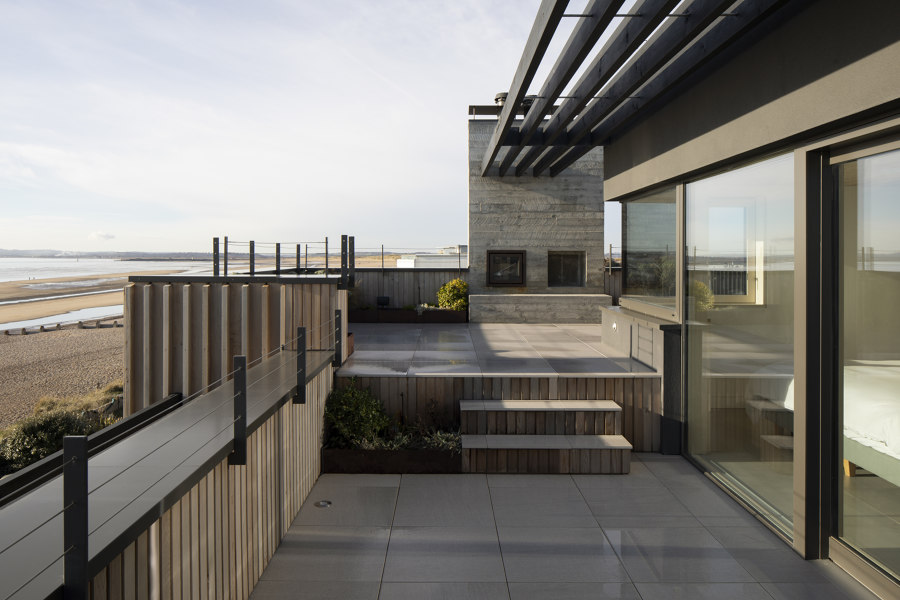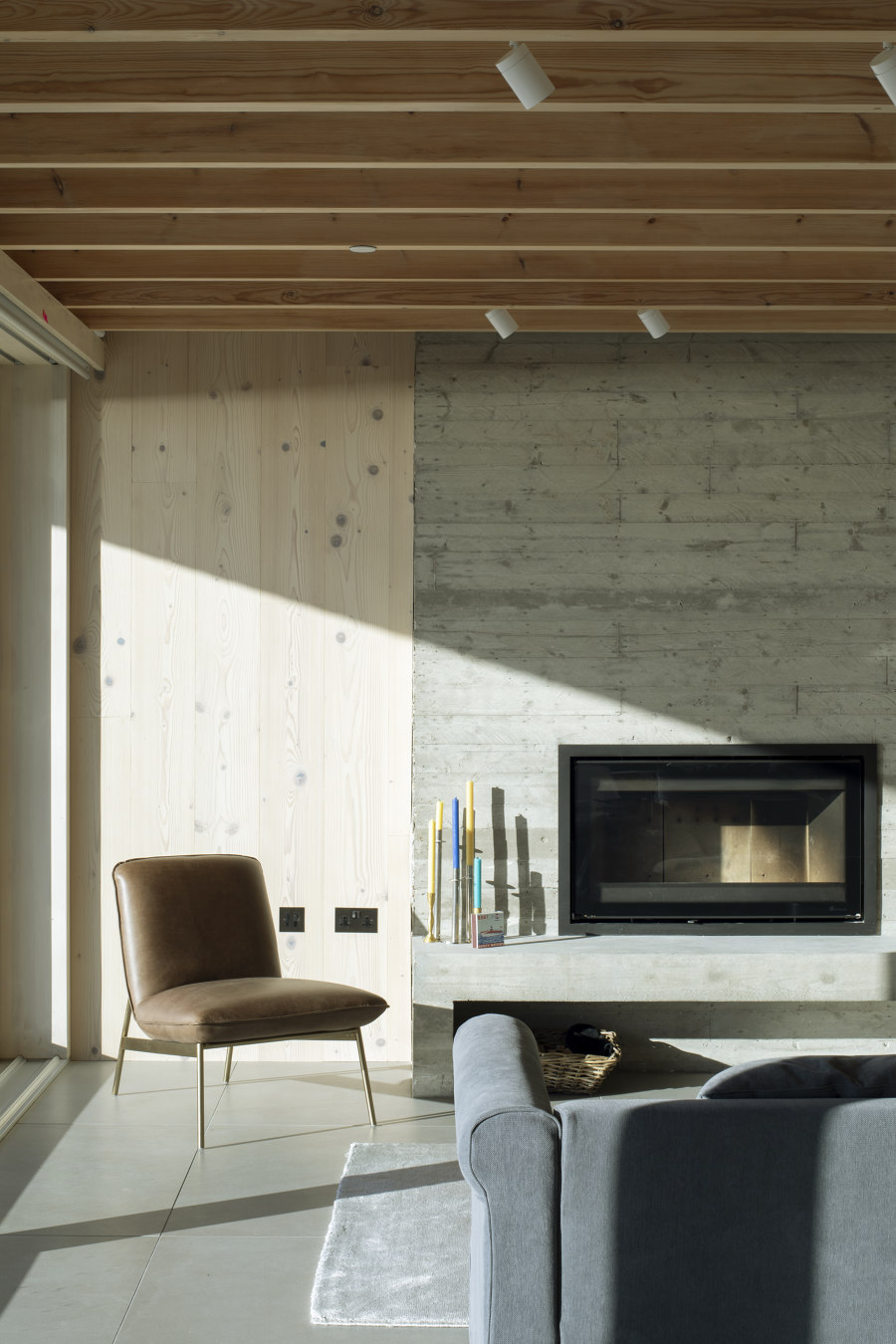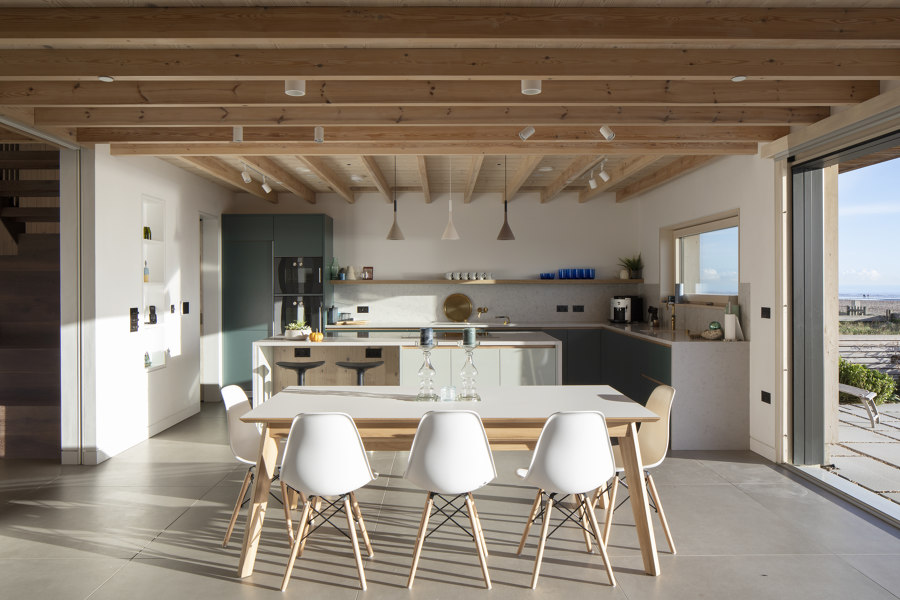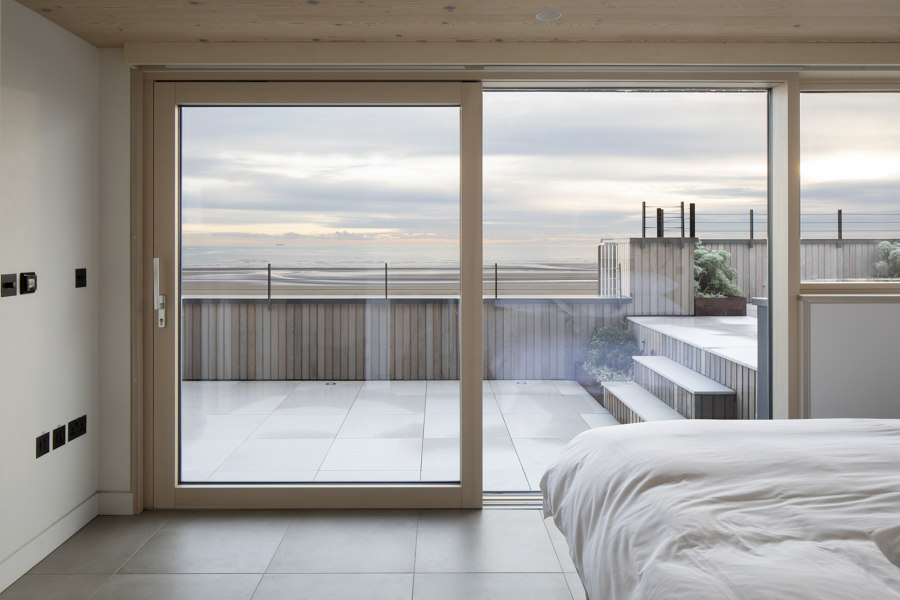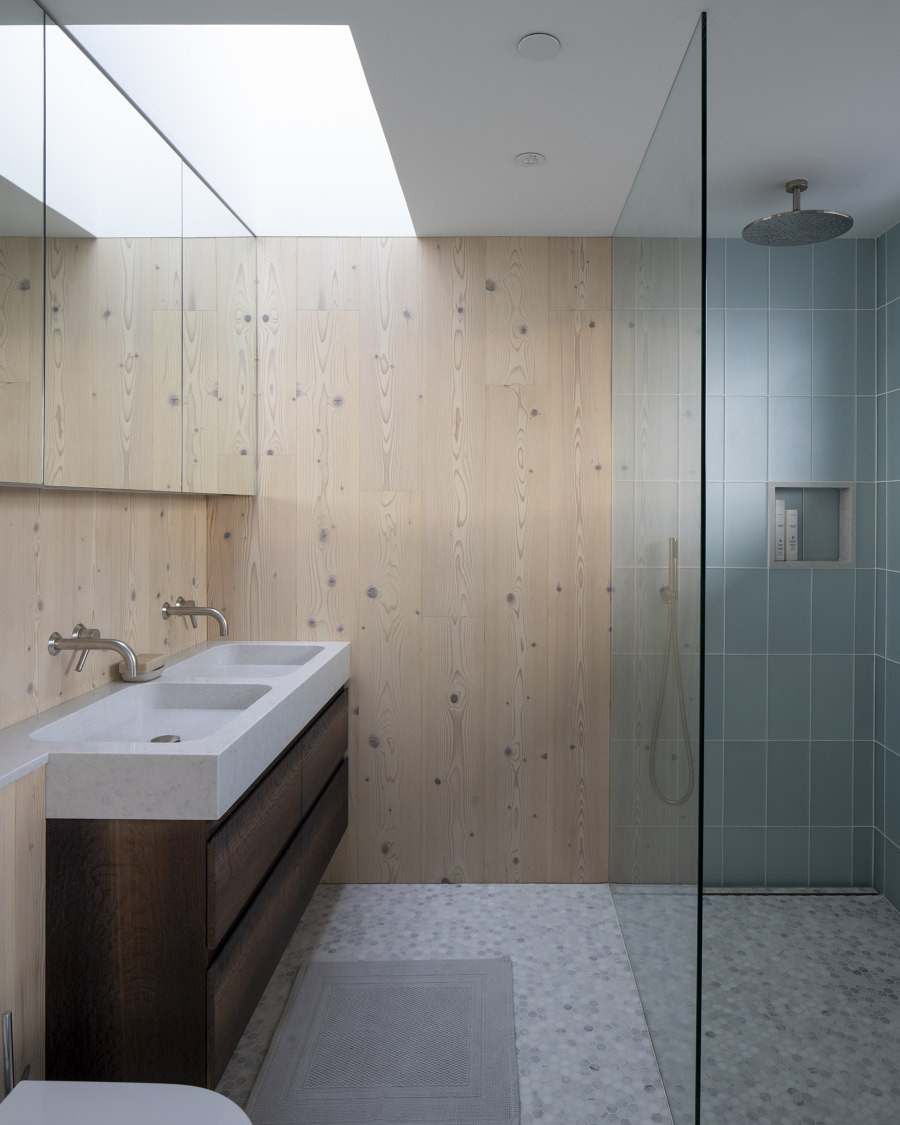The Suttons is a newly built beach house in Camber Sands, East Sussex. Camber Sands is famous for its fantastic expanse of sandy beach surrounded by undulating sand dunes which are designated as a SSSI site. The house design evolved around several key principles; a functional family space, a building that can withstand the extreme environment, maximising the incredible views and working to highly sustainable principles.
The design of the house creates varied pockets of external space at ground level to offer shelter from the sun and shelter from wind and rain during the ever-changing extreme weather. There are several balconies at first floor level which again offer sheltered seating, along with a roof terrace on the second floor. The roof terrace is surrounded by planted beds, a wildflower and shingle roof and an outdoor fireplace. The landscaping was an essential aspect to the project to bed the property into its unique surroundings and to create a gentle transition from the sandy beach, up onto the shingle and through to the private outdoor spaces.
Internally there are large open plan family spaces on the ground floor with views out across the beach to the English Channel and direct access to the beach. There is also a first-floor family space which offers privacy but still gives fantastic views out to sea.
A pair of 90-meter-deep boreholes within the internal courtyard area have been installed to create a ground source heating system. Energy from the ground is converted to provide all the heating and hot water in the house to passively heat the spaces. The ground source heat pump can also be reversed by extracting warmth from the building and exchanging it with cool energy from the ground to condition the interiors in the hotter summer months.
There are solar panels on the roof which provide additional hot water capacity. The building is highly insulated with high levels of thermal mass created using a concrete frame and slab construction. It is also exceptionally air tight and requires an MVHR exchange system to ensure regular conditioned air exchanges. These factors all combine to result in a house with minimal long-term running costs and a low carbon footprint.
Externally the designs hint at the concrete structural frame by exposing areas of fair faced concrete. There is a concrete datum plinth around the base of the building, with concrete infill panels at ground floor in certain locations, along with the fair faced concrete chimney, which is also exposed internally as it rises through the building on each floor level.
The garden walls and landscaping also use fair faced concrete which has been selected to withstand the extreme coastal environment. The concrete shuttering has been intentionally rough sawn to leave the timber impression on the concrete when struck. Other areas of the elevations are clad in natural Cedar, both horizontally and vertically. This is combined with a black render finish to the third floor.
Design Team:
RX Architects


